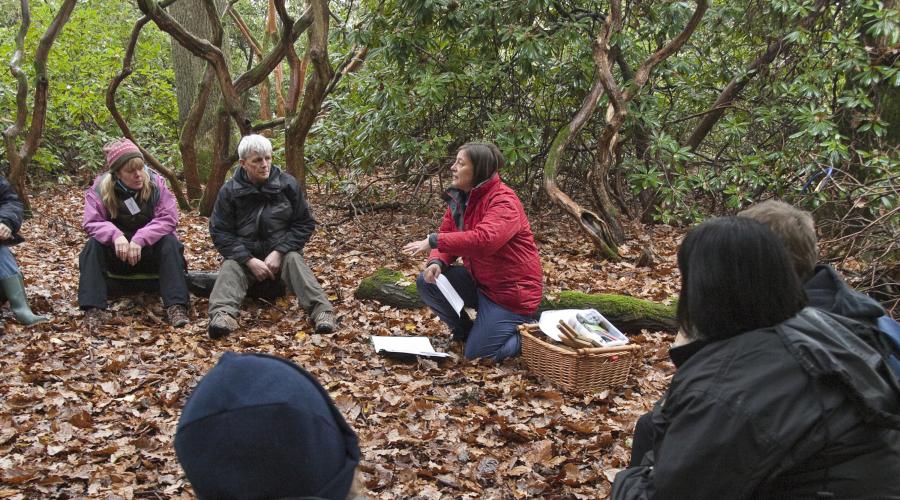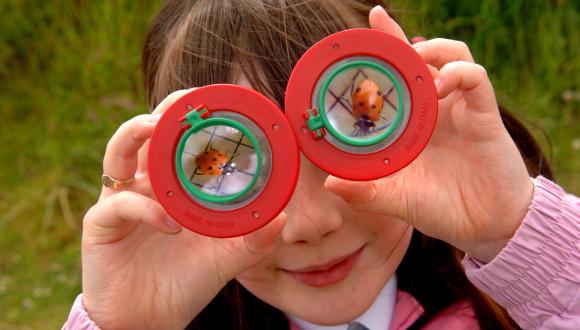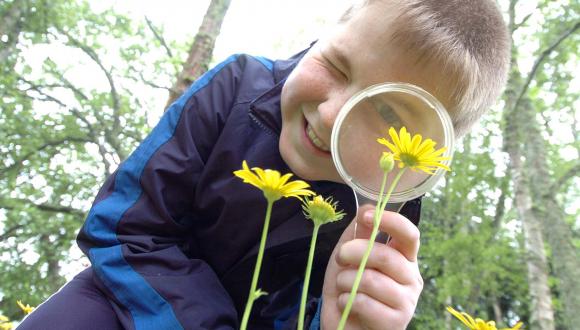
A whole school approach to learning in local greenspace
Perhaps colleagues have seen the impact of learning in local greenspace on your pupils and your community and are keen to get involved? Maybe you have been given the role of developing outdoor learning in your establishment and don’t know where to start? Perhaps you are a school leader looking for guidance on how to embed outdoor learning?
Whole schools learning in local greenspace can follow the same process as an individual teacher. You can use the different sections of this resource to consider why you should learn in local greenspace and find, access, use and improve your local greenspace. Additional strategic thinking and planning would be beneficial, e.g.
- carry out a baseline assessment of current practice, barriers and opportunities;
- develop a bespoke action plan;
- consider your outdoor learning in relation to school improvement planning, the National Performance indicators and other relevant policies;
- revisit and revise your action plan regularly.
Baseline assessment
It can be helpful to know your starting point regarding the use of local greenspace for learning. This may highlight strengths that could be built on, or give you a focus regarding gaps to fill. Are your pupils offered a progression of outdoor learning experiences in their school career? Are opportunities taken to learn outdoors as part of all curricular areas, at all stages?
Involve the pupils in helping you find out. They could:
- develop and carry out a survey of teachers on their current use of the school grounds and local area. Which greenspaces do staff already use, if any?;
- question teachers on how frequently they take learning outdoors and for which curriculum areas;
- ask staff what would help them get out more;
- help complete a SWOT analysis for using local greenspace (identify strengths, weaknesses, opportunities and threats);
- use our example questionnaire for staff (and use it with our template action plan).
Find out more
Creating your action plan
For learning in local greenspace to become truly embedded throughout the school you should include it in your School Improvement Plan.
When creating your action plan:
- use your baseline assessment and greenspace audit to inform your action plan. Build on your strengths and plan how you will overcome any barriers. Do you need to do anything at your space or en-route before you can begin using it with pupils?;
- a great start to planning pupil visits is to use the Teaching in Nature approach. If you don’t have a site manager or other person to share their knowledge about the space, just go yourselves as a group of colleagues; you will be amazed at the ideas that are generated when you simply spend some time there together;
- working with parents and the wider community is an extremely worthwhile investment and will help normalise learning in local greenspace;
- be ambitious but realistic. You are likely to encounter many barriers and issues along the way but also come across many opportunities you haven’t even thought of now. Build in frequent review dates in case you need to update your tasks and timescales in the light of these;
- do you want to link with other initiatives or award schemes, perhaps to reinvigorate something you already do?;
- don’t try to do everything at once. Is your initial aim to improve health and wellbeing; help pupils apply Maths in a real-life context; improve Literacy; increase physical activity; develop leadership skills; ease transition? Perhaps different teachers, year groups or subject teachers could focus on different things and then share with others;
- evaluation should be planned in from the start. Do you need to gather baseline information, e.g. on pupil attainment in a certain curricular area? Having information on raised attainment or improved behaviour, e.g. could help you convince colleagues that learning in local greenspace is worthwhile or even help secure funding;
- Get school leadership on board as early as you can. The National Improvement Framework recognises the quality and impact of leadership as one of the most important aspects of the success of any school;
- use our action plan template, which builds on our baseline questionnaire.
Find out more
School improvement planning and learning in local greenspace
Baseline assessment - Questionnaire to inform action plan
The National Improvement Framework and learning in local greenspace
Getting colleagues on board
It can sometimes be a challenge to get or keep colleagues on board. Consider the reasons for their reluctance and choose your approach accordingly.
If you used our questionnaire to inform action plan, did this give you any insight? What barriers do they face or perceive? Perhaps they lack confidence, time or just don’t get it.
- Tell colleagues about the benefits of engaging with local greenspace; from your own and your pupils’ experience as well as the research.
- Highlight the policy drivers; not only do teachers have ‘permission’ but they are compelled to help pupils engage with their local area.
- If they are concerned about health and safety, work together to do a risk-benefit assessment or join them on their greenspace.
- Spend time at your greenspace as a whole staff, if possible. You could use the Teaching in Nature approach: learn about your space from the land manager; brainstorm lesson ideas; or just explore and enjoy being there.
- Ask staff to share fond memories of their childhood. Chances are they were outdoors and/or included an element of risk or challenge, which is easier to facilitate in the outdoors. Discuss the benefits of offering this to their learners.
- Involve your learners in convincing a reluctant colleague; this can be very powerful and effective. Can they introduce their greenspace to other teachers or classes; lead some of the activities they have done there; share some of what they have learned and enjoyed?
- Team teach in your greenspace with a buddy class, subject colleague or stage partner.
- Your accomplishments may seem unattainable; share your challenges and how you overcame them as well as the successes.
- Take baby steps: they will be easier to achieve and maintain and, ultimately, embed. Don’t forget to celebrate ‘baby achievements’ along the way!
- Develop school policies and procedures for learning in local greenspace to give colleagues confidence and support.
- Hold a greenspace day each month or term, with inexperienced colleagues gradually taking on more and more responsibility.
- Ask colleagues to take responsibility for a small area of learning in the local greenspace (e.g. Level 1 Literacy or National 5 Art and Design); this will feel less daunting and give them ownership.
- Demonstrate the links with other initiatives to emphasise that this is not another added extra; it can ‘tick more than one box’.
- Highlight professional development opportunities.
- Share films from other schools that are learning in local greenspace to highlight the potential.
- Highlight case studies showing how various schools have overcome their challenges to achieve great benefits.
- Enlist the help of school leaders. The National Improvement Framework recognises the quality and impact of leadership as one of the most important aspects of the success of any school.
Find out more
Why learn in local greenspace - the policy context and research
Questionnaire to inform action plan
Using your local greenspace, including school policies and procedures, links to other initiatives etc.
Learning in local greenspace case studies
Related links
HMIE Successful Approaches to Learning Outdoors
LtL learning in local greenspace films (Youtube link)
SLC learning in local greenspace films (Youtube link)





